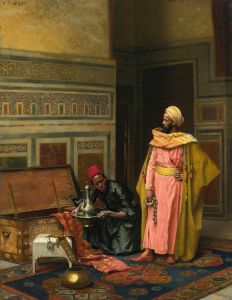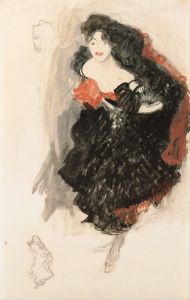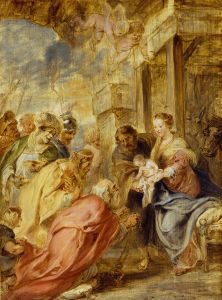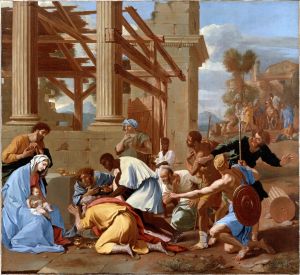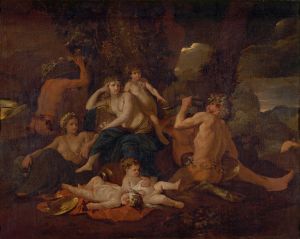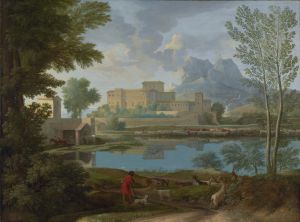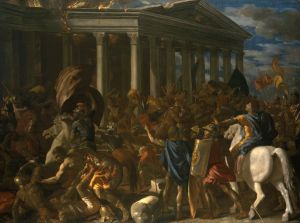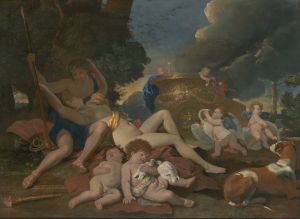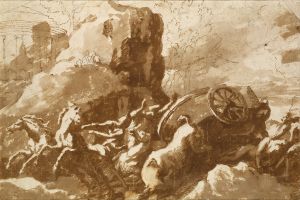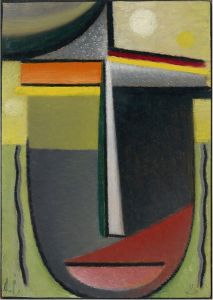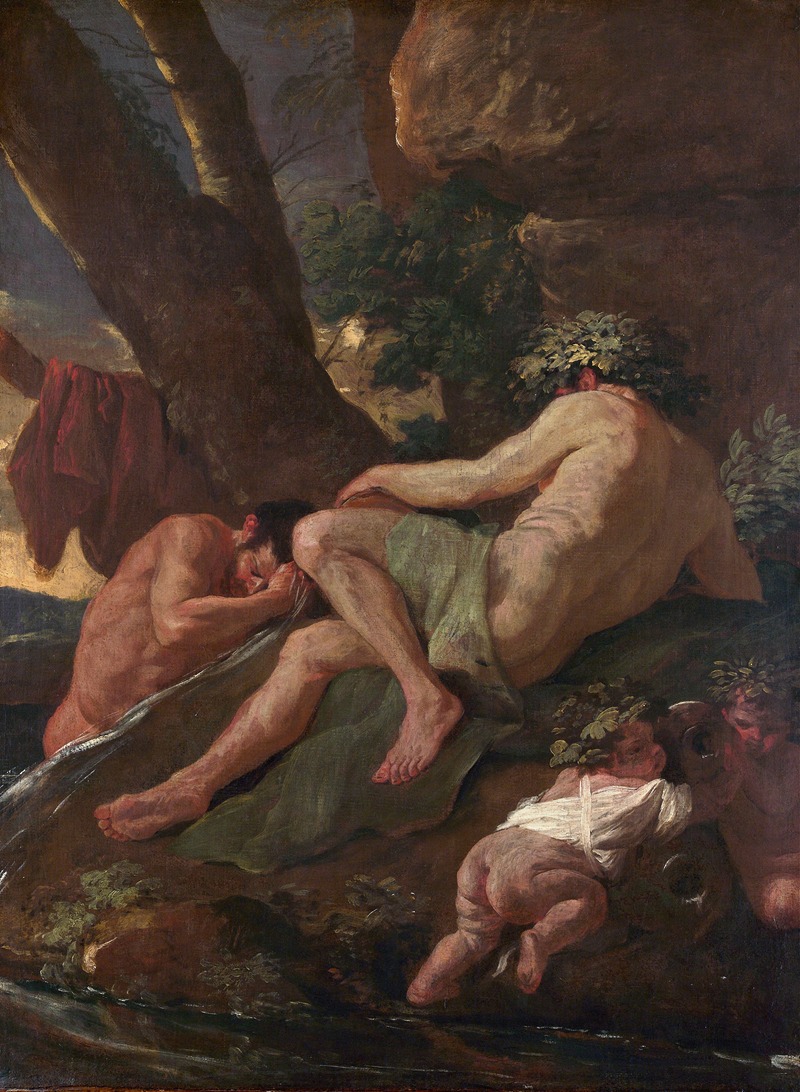
Midas Washing At The Source of The Pactolus
A hand-painted replica of Nicolas Poussin’s masterpiece Midas Washing At The Source of The Pactolus, meticulously crafted by professional artists to capture the true essence of the original. Each piece is created with museum-quality canvas and rare mineral pigments, carefully painted by experienced artists with delicate brushstrokes and rich, layered colors to perfectly recreate the texture of the original artwork. Unlike machine-printed reproductions, this hand-painted version brings the painting to life, infused with the artist’s emotions and skill in every stroke. Whether for personal collection or home decoration, it instantly elevates the artistic atmosphere of any space.
"Midas Washing at the Source of the Pactolus" is a painting by the French Baroque artist Nicolas Poussin. Created in the early 17th century, this work is a notable example of Poussin's classical style and his interest in themes from ancient mythology.
The painting depicts a scene from the myth of King Midas, a legendary figure from Greek mythology. According to the myth, Midas was granted a wish by the god Dionysus, and he chose the ability to turn everything he touched into gold. However, this gift soon proved to be a curse, as even food and drink turned to gold, making it impossible for him to eat or drink. Realizing the severity of his predicament, Midas begged Dionysus to take back the gift. Dionysus instructed him to wash in the river Pactolus to rid himself of the golden touch. The painting captures the moment when Midas is washing in the river, symbolizing his release from the curse.
Nicolas Poussin was born in 1594 in Les Andelys, Normandy, and he spent most of his career in Rome. He is known for his disciplined approach to composition and his use of classical themes. Poussin's works often reflect his deep knowledge of ancient literature and philosophy, and "Midas Washing at the Source of the Pactolus" is no exception. The painting is characterized by its balanced composition, clear lines, and the use of light and shadow to create depth.
In the painting, Midas is depicted kneeling by the river, with his hands submerged in the water. The surrounding landscape is serene and idyllic, with lush greenery and a calm river, which contrasts with the turmoil that Midas has experienced. The use of classical elements, such as the idealized figures and the harmonious composition, reflects Poussin's admiration for the art and culture of antiquity.
The painting is held in the collection of the National Gallery in London, where it is appreciated for its artistic merit and its representation of a well-known mythological story. Poussin's ability to convey complex narratives through his art has made him one of the most important figures in the history of Western painting.
"Midas Washing at the Source of the Pactolus" is a testament to Poussin's skill in blending narrative and form, creating a work that is both visually appealing and intellectually engaging. The painting not only illustrates a mythological tale but also explores themes of greed, transformation, and redemption, which are universal and timeless.
Overall, this work exemplifies Poussin's mastery of the Baroque style and his dedication to classical ideals, making it a significant piece in the canon of Western art.





